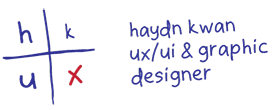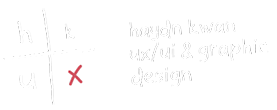
The case study
What fitness app feature benifits an experienced gym goer?
I teamed up with fellow General Assembly class mates Natalia and Komal for a two week sprint re-designing the Anytime Fitness app. The current Anytime Fitness app relies on third party apps to provide features like workout programmes (Anytime Workouts), run tracking (MapMyFitness) and a diary that tracks both exercise and calories (MyFitnessPal).
Our job was to include the most useful features and remove the need for third party providers. Due to the large amount of fitness features in Anytime Workouts, MapMyFitness and MyFitnessPal we had to conduct user research to decipher which ones would most benefit Anytime Fitness Members.
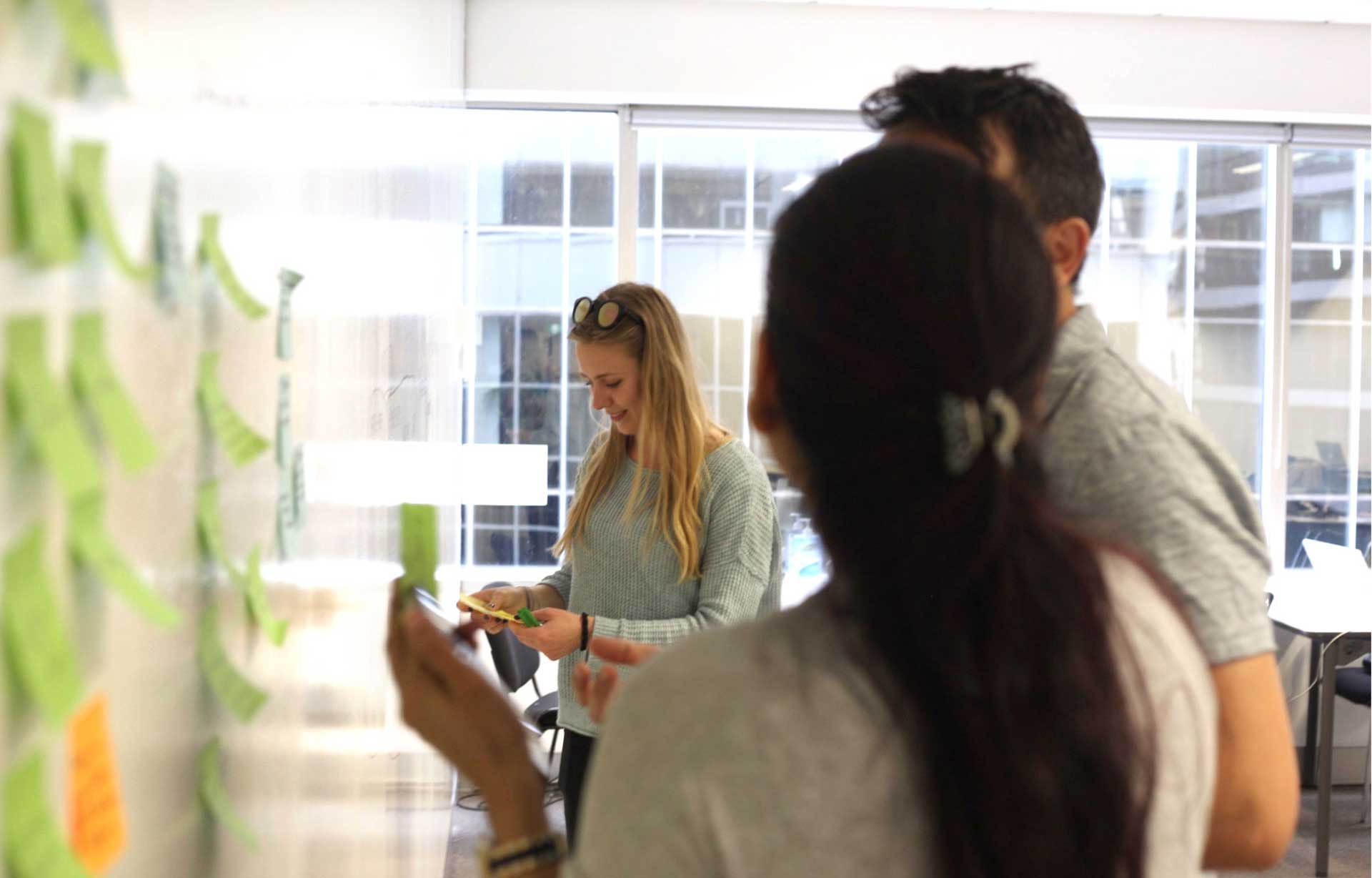
On the affinity map we assorted our notes into groupings. We faced problems synthesising survey information since it lacked context making it confusing. One of our large groupings informed us that experienced gym goers don’t use fitness apps because they are confident monitoring their own fitness.
The main motivations for going to the gym were;
- Improving mental health
- Increasing strength
- Maintaining weight
- Improving cardio
Improving Mental Health was our largest grouping and an unexpected insight.
Persona
To keep our target users needs and frustrations at the forefront of our decision making I combined our key findings to create a persona.
Luke Morecroft, Computer Programmer, 35, regular gym goer. His frustrations were a lack of exciting workout features and training programmes on the Anytime Fitness app.
problem
Luke, an experienced gym member didn’t gain anything from using the Anytime fitness app because he was already motivated and confident tracking his own fitness levels.
To get past this we imagined Luke being happy with his workout routine but still visiting the app for inspiration only to feel frustrated when he didn’t get any. Our problem statement read;
“Experienced Anytime Fitness members need a challenging mental or physical training program on their Anytime Fitness app because they aren’t benefitting from the current app features”:
To visualise the problem I animated Luke having had a hard day at work and trying to find inspiration using the Anytime Fitness app.
Animation depicting Luke’s main problem with the Anytime Fitness App
design & solution
The research told us that weight training and good mental health were important to Luke but we couldn’t find an appropriate 3rd party feature that would inspire an experienced gym member to start using it. Instead of mental health or strength training we settled on a solution addressing cardiovascular fitness.
This feature encouraged experienced gym goers to get involved in a 12km running challenge where they would compete against everyone else in the field and then see their overall standing.
This feature taken from the MapMyFitness app was supposed to encourage a competitor like Luke to re-engage with the Anytime Fitness app.
prototyping
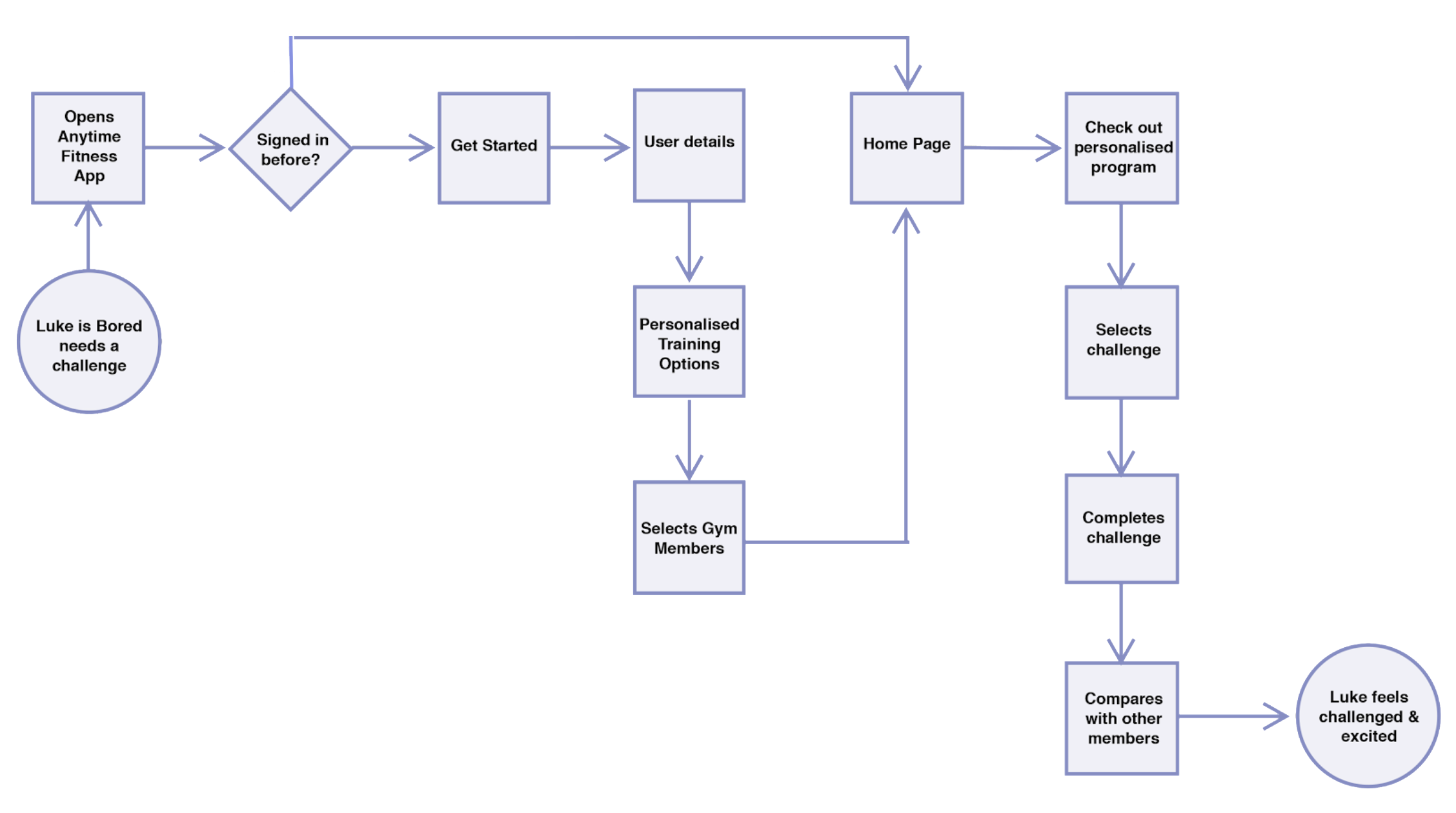
Userflow describing 12km running challenge solution
We created a paper prototype of the app solution to quickly determine if there were any navigational, information or design problems. To do this we asked volunteers to think out loud while they logged in and chose the 12km running challenge. Some of the comments were;
“There’s too much information on the homepage”
“Not enough info about challenges and programs.”
In the next iteration we created a B&W clickable prototype so that volunteers could test it on mobile phones. The B&W interface allowed them to concentrate on the task at hand rather the visual aesthetic
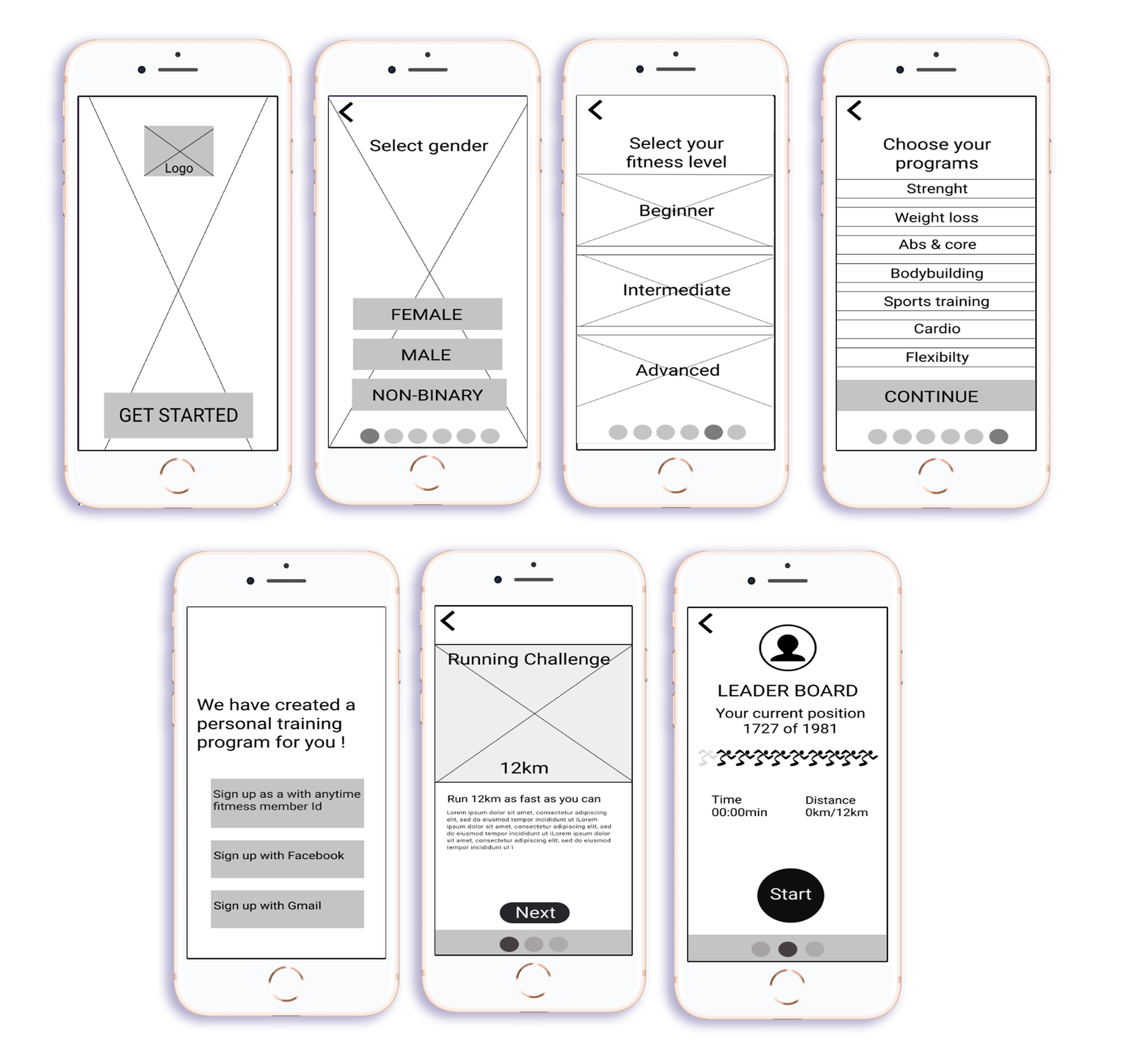
By the end of the sprint I began adding colour and imagery creating a high fidelity prototype.

hi-fidelity user interface designs
During this two week sprint we added one main feature which was the 12km running challenge. In future iterations we would add more fitness features using our research as a guide.
learnings
We found a solution addressing our research findings that fulfilled the brief even if they weren’t our major findings, which were mental health and weight training.
More in-depth interviewing at the start might have revealed other frustrations or made the key groupings more clearly defined. For example better researching may have revealed that regular workouts and good mental health were one and the same instead of two seperate groupings. Knowing something like this would have added clarity and sped up our decision making as a team.
Our 12km running challenge solution was only possible because mobile phones can GPS track your steps in realtime. Nothing currently exists like this for tracking weight training as it would require digital weights (don’t yet exist) to be synced up with the fitness app. If I had known the limits of gym technology I would have closed this line of enquiry earlier speeding up the design process.
This assignment was a good lesson in the benefits of in-depth user research and having a good understanding of the technology and functionality available to you. It also demonstrated the importance of knowing the industry when trying to communicate as a team.
Most importantly it showed me that when in-depth research isn’t available it is still possible to muster a solution that still benifits the user in this case an experienced gym goer like Luke.
